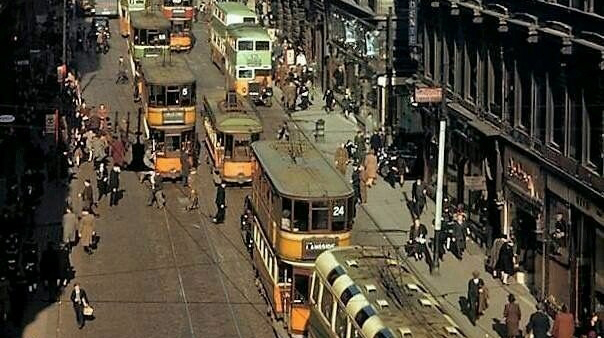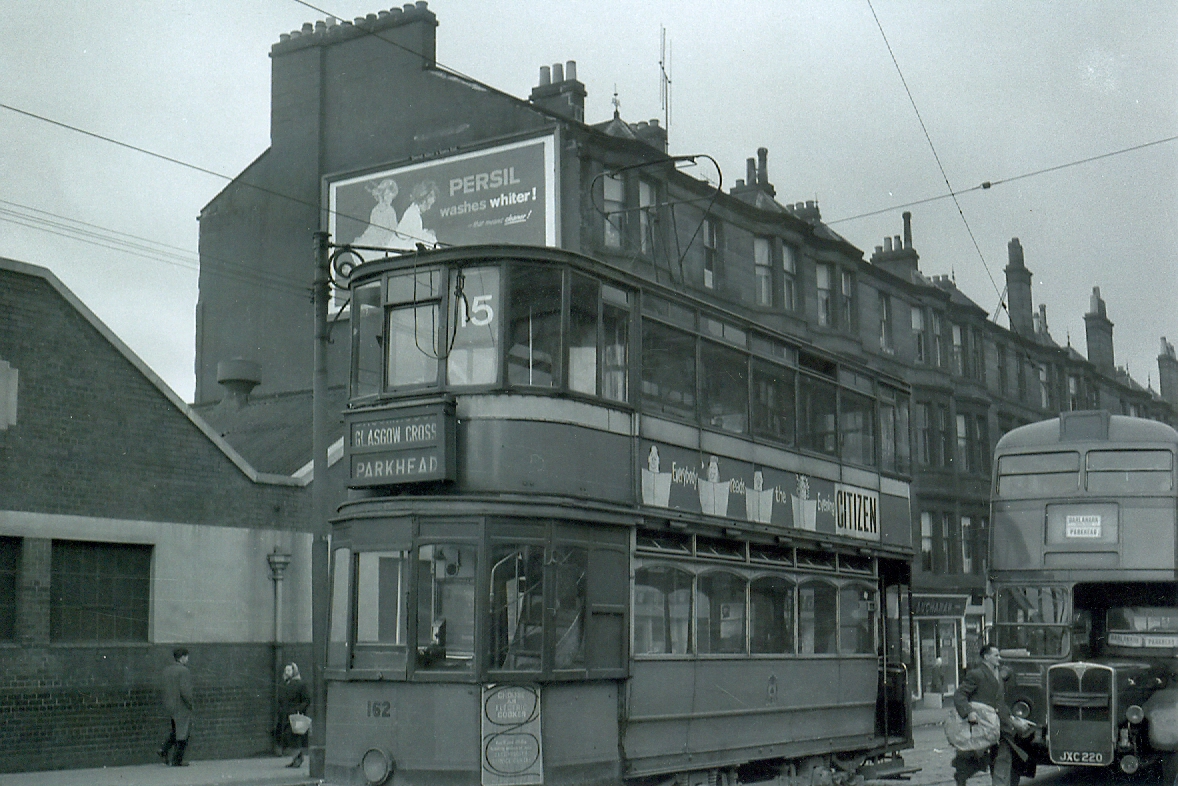The Glasgow Standard Tram
The "Workhorse" of the Glasgow tram network

Glasgow had one of the largest operating tram fleets in Europe at its maximum extent of operation. From the very beginning of its electric tram working, one type of tram became synonymous within its fleet, that was the Glasgow Standard. What is a Glasgow standard tram? A standard was a class of tram primarily built between 1898 and 1924, initially a double decked tram with open upper deck and lower vestibules using “lath-and-space seating”. They were eventually to become designated into two types the “Round dash” and “Hex dash” depending on the shape of the dashboard on the front.
When Glasgow Corporation Tramways (GCT) were planning their first electric tram, commonly referred to as the Room and Kitchen tram, they were also designing a longer term, mass-built, tram to service the increasing number of electrified routes throughout the city.
The first two trams of the Standard type were numbered 686 and 687 built by GCT at their Coplawhill works. After these trams were built and put into operation a number of modifications were carried out. The trams were fitted with different trucks for evaluation purposes, tram No 686 were mounted onto a Brill 21E Truck (an example from 1900 can be found on Glasgow 1017 at Summerlee Museum) and No 687 was mounted onto a truck supplied by the New York Car and Truck Co. Something thing that is worth noting is that with every new batch of trams that were built, modifications were added to the design as experience was gained in their operation. After the initial trials of the two trams it was decided that all future Standards would be built with Brill 21E Trucks.



By 1902 the design had changed so much that a new batch of Standards was planned and referred to as the Phase 2 Standard. As a result of this two prototype trams were built No’s 439 and 438 and some of the changes included adding a partial cover on the top deck, the upper vestibule remaining open and is should be noted that the Phase 2 Standards were the last trams to have “lath-and-space seating”. seats installed by GCT. At the same time the remaining Phase 1 trams had top covers added although these were not completed until 1920. Over 140 new Phase 2 trams were built between 1902 and 1910.
In 1910 tram no 397 was modified to add platform vestibules and storm covers, this tram then became known as the Phase 3 Standard trams. By 1926 most of the original Phase 2 trams were converted and an additional 312 trams were built (it should be noted that the standard trams were numbered 686 to 1000 and then from 664 downwards to 1). Some of the changes that were made were to widen the body, increase the wheelbase from 6 feet to 7 feet and the dash being changed from round to hex-dash. By 1914 691 trams cars were rebuilt and with the new trams added this meant that Glasgow had over 1,000 standard trams.



In 1914 an experiment took place using tram no 137 altering this tram for one-way passenger flow. Tram no 1089 (Wee Baldie) and 1005 (Experimental Tram) were used to replace tram 137 which was converted back in 1930.
In 1923 a new truck was tested on tram no 665 along with other experiments, these changes were in response to the introduction of the Glasgow Corporation Motor Buses in competition on the tram routes. This influenced another development of the Standard tram design and is referred to as the Phase 4 Standard. This involved completely enclosing the top deck along with controller and truck modifications along with the addition of a bow collector, removing the trolley pole. No new trams were built under Phase 4 and all remaining Standard trams were converted to the Phase 4 design, (a phase 4 tram, no 1088 can be viewed at the Riverside Museum, Glasgow). Further experiments continued with the Standard trams in use, unfortunately they were not successful on the Standards. However none of this work was wasted and the experience gained was later used on the new Coronation class tram. Of the remaining Standards in use 547 trams had body, truck and motor upgrades at Coplawhill works and a further 455 trams had body alterations carried out at the Elderslie Tram Depot (Former Paisley District Tramway Depot/Works).



In 1937 with the introduction of the new Coronation Class tram some of the older standard Trams were converted to single deckers for the Clydebank/Duntocher route and during the second world war many of the standards underwent braking improvements including addition of air brakes and in the following decade further minor improvements were made. By 1950 the standard Trams were beginning to be withdrawn and this continued until the Glasgow tramway system closed in September 1962 with the oldest tram in service operating from 1902 to 1961. The operation of the Standard tram, in its various guises, throughout almost the entire electrification life of the Glasgow Tramway earned it the title of ‘The Work Horse of the Tramway’.
If you are interested to learn more about the Glasgow Standard tram we can recommend the following publication ‘The Glasgow Tramcar by Ian G McM Stewart’ this contains a detailed account of the development of the Standard tram with excellent technical details.








